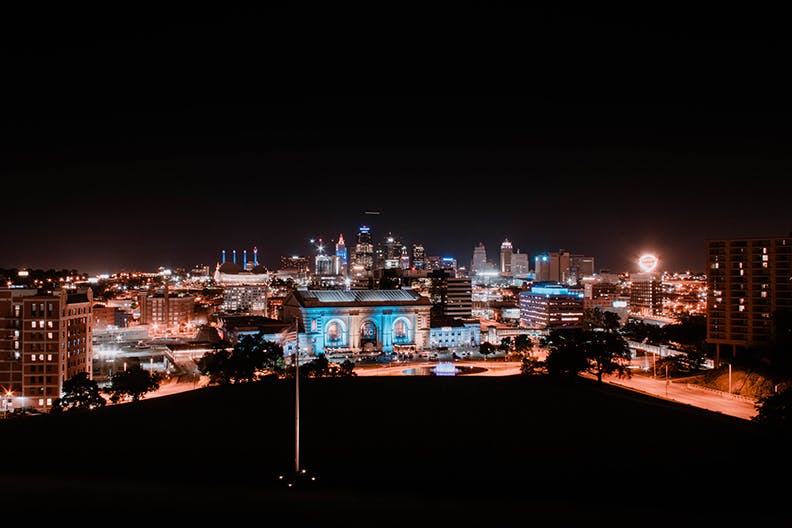
Kansas City spans two states, crossing into Kansas and Missouri. Kansas City, on the Missouri side, is the capital of Missouri and is also the largest city in Missouri. However, as the largest city, the area deals with exceptionally high rates of crime. This article will use crime rates to determine which neighborhoods in Kansas City, Missouri are the most dangerous.

How to Measure Crime Rates
Crime rates are the best way to measure crime in an area. Crime rates help to give an accurate representation of how much crime is reported. Each year, the FBI collects crime records from law enforcement agencies across the states. Each police department reports the number of crimes reported in their district. The FBI then collects the data and records the crime rates in the FBI Crime Reporting Statistics.
The FBI Crime Reporting Statistics publishes crime data for cities and states. These numbers are recorded as “the number of crimes per 100,000 people.” No matter the population of the city, the crime rate will always be referenced as “per 100,000 people” to keep crime rates uniform across the country. When the FBI reports crime rates for the nation, states, and cities, the rates are published as either violent crime rates or property crime rates.
Violent crime includes murder and homicide, rape, sexual assault, aggravated assault, and robbery. Violent crimes are considered to be the vilest of crimes, and those convicted of violent crimes will be convicted of a felony. The average sentence for a violent crime will be between five and ten years in prison. Depending on the type of violent crime, many will spend more than 20 years in prison. The longest jail sentence ever given in the United States was for a child rapist in Oregon. The man was given 30,000 years in prison, 5,000 years for each child harmed. That being said, most jail sentences will be shorter than 30,000 years.
Property crime includes burglary, theft, and motor vehicle theft. Most property crimes are misdemeanors, meaning that the person convicted will spend less than one year in prison for the crime. However, depending on the circumstance and the state of the conviction, the person could be convicted for a felony.
To create a baseline for crime, the FBI reports a national crime rate. The national crime rate acts as the national average crime rate. The total national crime rate is 2,744 crimes per 100,000 people. The total crime rate can be divided into violent crime rates and property crime rates.
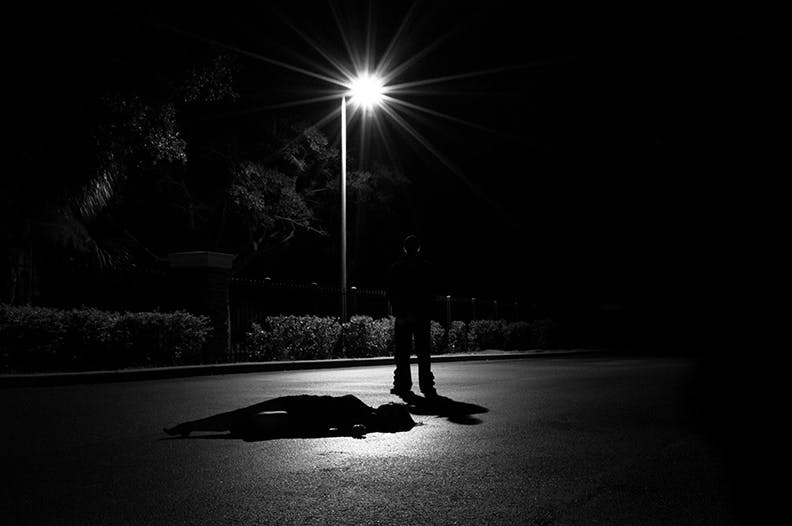
The national violent crime rate is 382 violent crimes per 100,000 people. The violent crime rates for murder, rape, robbery, and burglary are:
- National Murder Rate: 5 murders per 100,000 people
- National Rape Rate: 43 rapes per 100,000 people
- National Robbery Rate: 86 robberies per 100,000 people
- National Assault Rate: 247 assaults per 100,000 people
The national property crime rate is 2,362 property crimes per 100,000 people. The property crime rates for burglary, theft, and car theft are:
- National Burglary Rate: 376 burglaries per 100,000 people
- National Theft Rate: 1,595 thefts per 100,000 people
- National Car Theft Rate: 229 car thefts per 100,000 people
When a city or state has crime rates that are higher than the national average, the city or state is considered dangerous. When an area has crime rates that are lower than the national average, the area is considered safe.
Before we can look at the crime rate in Kansas City, Missouri, we need to first look at the crime rates of Missouri itself. The violent crime rate in Missouri is 502, which is higher than the national average. The violent crime rates for murder, rape, robbery, and assault are:
- Missouri Murder Rate: 10 murders per 100,000 people
- Missouri Rape Rate: 48 rapes per 100,000 people
- Missouri Robbery Rate: 85 robberies per 100,000 people
- Missouri Assault Rate: 360 assaults per 100,000 people
Missouri is not considered a necessarily safe state. The state has the fourth-highest homicide rate in the country, according to the CDC. Typically, when a state reports high murder rates, it isn’t because the entire state is murderous; it’s because there are a few cities that have abnormally high rates of homicide.
The property crime rate in Missouri are slightly above average. The property crime rate is 2,647 property crimes per 100,000 people. The property crime rates for burglary, theft, and car theft are:
- Missouri Burglary Rate: 445 burglaries per 100,000 people
- Missouri Theft Rate: 1,879 thefts per 100,000 people
- Missouri Car Theft Rate: 323 car thefts per 100,000 people
Residents living in Missouri are more likely to experience property crime than average. Those living in Missouri have a 1 in 38 chance of becoming a victim of property crime.
As the largest city in Missouri, Kansas City likely influences the crime rate of the entire state. The city has a population of 491,918 people and welcomes 25 million tourists in one year. So, is Kansas City a safe or dangerous city to live in?

Kansas City Violent Crime Rate
Kansas City has a violent crime rate of 1,596 violent crimes per 100,000 people, which is 417 percent higher than the national average. Residents in Kansas City have a 1 in 63 chance of becoming a victim of violent crime (compared to 1 in 199 in Missouri). The crime rates for murder, rape, robbery, and assault are:
- Kansas City Murder Rate: 28 murders per 100,000 people
- Kansas City Rape Rate: 82 rapes per 100,000 people
- Kansas City Robbery Rate: 333 robberies per 100,000 people
- Kansas City Assault Rate: 2,153 assaults per 100,000 people
Kansas City’s homicide rate is over five times higher than the national average. Those living in Kansas City should avoid areas where murder reports are common. Other crimes, such as assault, are also incredibly common. The assault rate in Kansas City is 466 percent higher than the national average.
Kansas City Property Crime Rate
Property crime is also fairly common in this major city. Kansas City has a property crime rate of 4,352 property crimes per 100,000 people, nearly double the national average. The property crime rates for burglary, theft, and car theft are:
- Kansas City Burglary Rate: 759 burglaries per 100,000 people
- Kansas City Theft Rate: 2,727 thefts per 100,000 people
- Kansas City Car Theft Rate: 866 car thefts per 100,000 people
The odds that a resident of Kansas City will experience property crime is 1 in 23. Residents should avoid walking through dangerous, high-crime neighborhoods and carry personal protection, such as pepper spray and a personal alarm. To prevent burglary, homeowners should install a home security system.
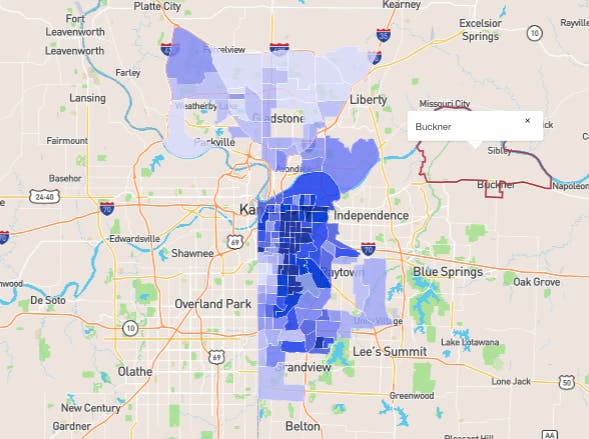
Kansas City Crime Map
Crime maps can help residents of an area determine where crime occurs most often. Crime maps are often color-coded or have legends that show where crimes have been committed. Crime maps for specific neighborhoods can be found at either of these two sites:
SpotCrime.com CrimeMapping.com
A crime map of Kansas City, provided by NeighborhoodScout.com, shows that crime in the area is most concentrated near the center of the city.
Areas marked in dark blue have extremely high crime rates while areas marked in light blue have extremely low crime rates. The top five most dangerous neighborhoods in Kansas City, according to the crime map, are Washington Weatley, Palestine West and Oak Park Northeast, East Community Team South, East Sqope Highlands, and North Town Fork Creek.
Most Dangerous Neighborhoods in Kansas City
Not every neighborhood in Kansas City is inherently dangerous. However, some neighborhoods have incredibly high crime rates. Here are the top 10 most dangerous neighborhoods in Kansas City.
1. Washington Weatley
Washington Weatley is the number one most dangerous neighborhood in Kansas City. The area has a total crime rate of 13,597 crimes per 100,000 people. Residents living in Washington Weatley have a 1 in 7 chance of becoming a victim of either violent crime or property crime. The violent crime rate in Washington Weatley is 6,071 violent crimes per 100,000 people. The violent crime rate is 1,934 times higher than the national average. Washington Weatley has a high murder rate and a high assault rate.
The property crime rate in Washington Weatley is 7,526 property crimes per 100,000 people. There are 342 percent more property crimes in Washington Weatley compared to the national average. There is a 1 in 13 chance of experiencing property crime in Washington Weatley.
2. Palestine West and Oak Park Northeast
Palestine West and Oak Park Northeast are the next two most dangerous neighborhoods. This area is defined by a high violent crime rate and a high property crime rate. There are 12,474 total crimes per 100,000 people reported by the local police commissioners office. The violent crime rate is 5,402 violent crimes per 100,000 people.
The property crime rate in Palestine West and Oak Park Northeast is 7,346 property crimes per 100,000 people. Residents living in Palestine West and Oak Park Northeast have a 1 in 13 chance of becoming a victim of property crime. One of the most common property crimes in this area is burglary, making it vital that homeowners protect their homes.
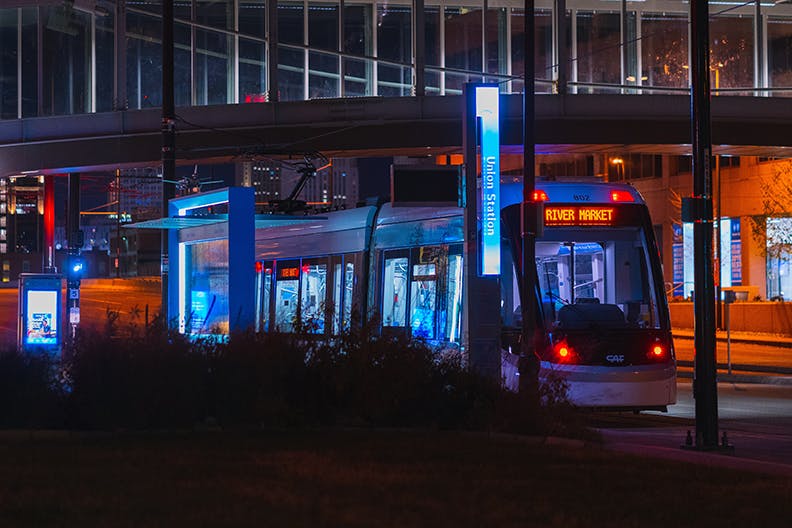
3. East Community Team South
East Community Team South is the third most dangerous neighborhood in Kansas City. The area has a violent crime rate of 5,072 violent crimes per 100,000 people. Residents living in this neighborhood have a 1 in 19 chance of becoming a victim of violent crime.
East Community Team South has a property crime rate of 7,263 property crimes per 100,000 people, which is 330 percent higher than the national average. There is a 1 in 13 chance that residents of East Community Team South will become a victim of property crime. In order to stay safe while living in this area, residents should stay on main streets and avoid areas within the neighborhood that could have even higher rates of crime than the neighborhood’s average (such as known gang hangouts).
4. East Sqope Highlands
East Sqope Highlands is the fourth most dangerous neighborhood in Kansas City. The area has a total crime rate of 13,096 crimes per 100,000 people. Residents have 1 in 7 chance of becoming a victim of any crime. The violent crime rate in this area is 5,020 violent crimes per 100,000 people.
The property crime rate in East Sqope Highlands is 8,076 property crimes per 100,000 people, which is 367 percent higher than the national average. Residents have a 1 in 12 chance of experiencing property crime while living in East Sqope Highlands. Due to a high level of drug trafficking in this part of the city, police warn visitors to avoid this area and suggest that residents travel in groups. Police have recently introduced community policing to the area; however, efforts to reduce crime in East Sqope Highlands is still underway.
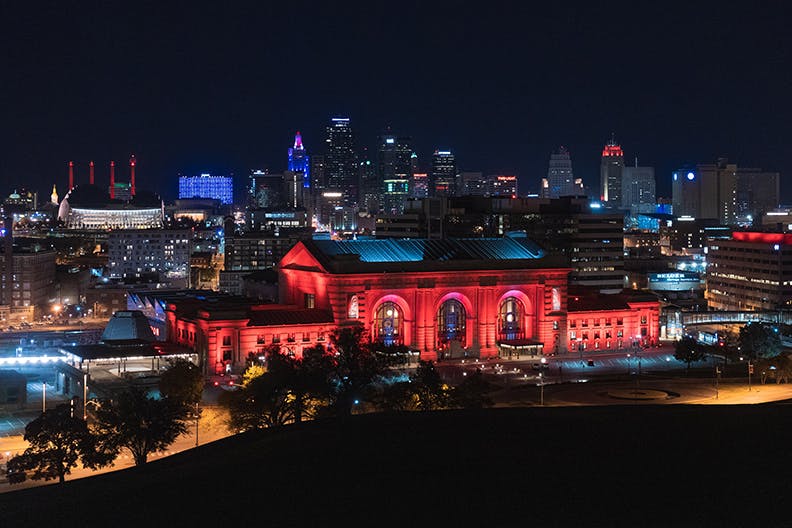
5. North Town Fork Creek
North Town Fork Creek, as the fifth most dangerous neighborhood in Kansas City, has a total crime rate of 12,894 crimes per 100,000 people. There is a 1 in 7 chance of becoming a victim of any crime. Violence is not uncommon in North Town Fork Creek. The violent crime rate in North Town Fork Creek is 4,669 violent crimes per 100,000 people. There is a 1 in 21 chance that residents of North Town Fork Creek will become victims of violent crime while in the neighborhood.
North Town Fork Creek has a property crime rate of 8,225 property crimes per 100,000 people. Residents of North Town Fork Creek have a 1 in 12 chance of seeing property crime. Those living in the neighborhoods of North Town Fork should prepare against burglary, theft, and car theft.
6. Longfellow
Longfellow is the sixth most dangerous neighborhood in Kansas City. It has a total crime rate of 11,714 crimes per 100,000 people. Those living in Longfellow have a 1 in 8 chance of experiencing either violent crime or property crime. For every 100,000 people, there are 32 crimes committed every day. The violent crime rate is 4,641 violent crimes per 100,000 people. The most common incidence of violence in Longfellow is assault. In order to avoid becoming a victim of assault, residents should travel in groups while walking through this area.
The property crime rate in Longfellow is 7,073 property crimes per 100,000 people. Although all property crimes are common in this area, the most common is theft. Residents should avoid leaving belongings outside of locked gates and should carry theft-proof bags while traveling.
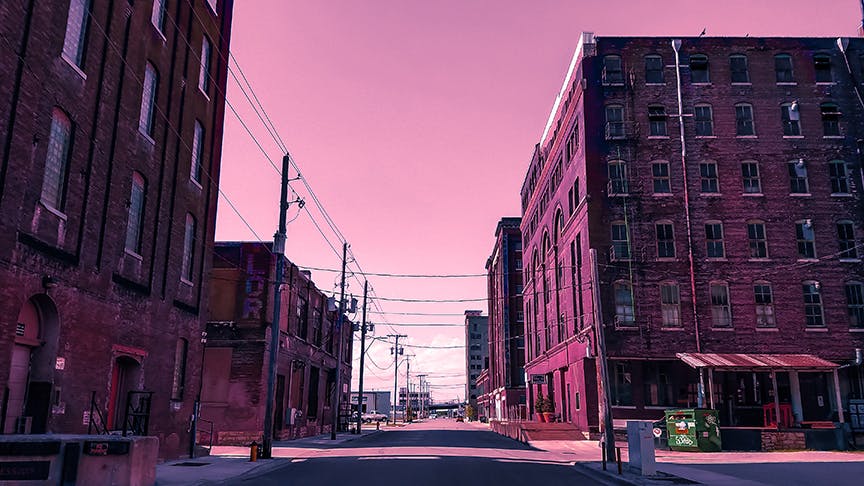
7. Ivanhoe Southeast
Ivanhoe Southeast is the seventh most dangerous neighborhood in Kansas City. The area has a total crime rate of 13,368 crimes per 100,000 people. While living in Ivanhoe Southeast, residents have a 1 in 8 chance of becoming a victim of crime. Ivanhoe Southeast’s violent crime rate is 4,603 violent crimes per 100,000 people.
The property crime rate in Ivanhoe Southeast is incredibly high. It has a property crime rate of 8,767 property crimes per 100,000 people. There is a 1 in 11 chance that a resident of Ivanhoe Southeast will become a victim of property crime.
8. Marlborough Heights
Marlborough Heights has a total crime rate of 11,551 crimes per 100,000 people, meaning that residents have a 1 in 9 chance of becoming a victim of violent crime or property crime. The violent crime rate in Marlborough Heights is 4,500 violent crimes per 100,000 people, with assault being the most common. Residents have a 1 in 22 chance of becoming a victim of violent crime while in Marlborough Heights.
The property crime rate in Marlborough Heights is 7,051 property crimes per 100,000 people. Marlborough Heights’s property crime rate is 320 percent higher than the national average. Residents have a 1 in 14 chance of becoming a victim of property crime.

9. Knoches Park
Knoches Park is the ninth most dangerous neighborhood in Kansas City. Knoches Park has a total crime rate of 11,024 crimes per 100,000 people. The violent crime rate in this neighborhood is 4,345 violent crimes per 100,000 people. There is a 1 in 23 chance that a resident of Knoches Park will become a victim of violent crime.
The property crime rate in Knoches Park is 6,670 property crimes per 100,000 people. There is a 1 in 14 chance that a resident of Knoches Park will become a victim of property crime. Crime statistics report that this area is at risk for gun violence, making it important that residents report suspicious activity to the local police.
10. Oak Park Southeast
The total crime rate in Oak Park Southeast is 11,371 crimes per 100,000 people, earning its place as the tenth most dangerous neighborhood in Kansas City. For every 100,000 people, there are 31 crimes reported every day. This area has a violent crime rate of 4,229 violent crimes per 100,000 people.
The property crime rate in Oak Park Southeast is 7,072 property crimes per 100,000 people, which is 320 percent higher than the national average. Residents have a 1 in 14 chance of becoming a victim of property crime while living in Oak Park Southeast.
Security Tips to Stay Safe in Kansas City
Since some neighborhoods are incredibly dangerous on the Missouri side of Kansas City, residents and homeowners must take the right precautions in order to stay safe. Here are five security tips for residents of Kansas City.

Install a Home Security System
According to a study conducted by the University of North Carolina at Charlotte, burglars are less likely to target a home that has a home security system. The study notes that burglars look for “easy targets.” Home security systems create an obstacle for burglars that most aren’t willing to target. The study noted that 60 percent of burglars would completely avoid homes with home security systems. If a burglar chooses to target a home with a home security system, 100 percent of burglars ran when the alarm was triggered.
Home security systems add an additional layer of protection for homeowners. The best home security system for homeowners in Kansas City is Cove Security. Cove offers high quality, professionally monitored systems for only $15 a month. The system offers HD indoor cameras and a completely wireless system, perfect for both homeowners and renters.
Having a home security system will ensure that your home won’t be targeted by burglars, even when living in a dangerous area. Home security systems can also protect against home intruders, stalkers, and unwanted attention. If your home is ever targeted by a burglar, the home security cameras will give you the evidence you need to find and prosecute the criminal.
Travel in Groups
While traveling in a dangerous neighborhood, never travel alone. In a majority of cases, victims of rape and assault were traveling alone when the event happened. However, those who travel in groups larger than three rarely reported being victims of rape or assault. For those living in dangerous neighborhoods, this means that traveling in a group can be lifesaving.
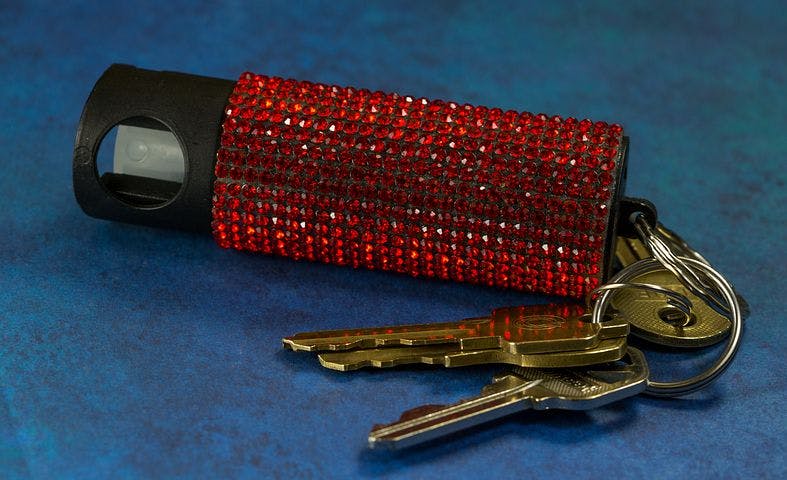
Carry Pepper Spray and a Personal Alarm
Regardless of whether you are traveling in a group or alone, carrying pepper spray and a personal alarm is vitally important. Pepper spray comes in a small portable carrier, typically no longer than one finger. It can be used as a keychain or carried discreetly in a purse. The device holds a chemical that, when sprayed into the eyes of an attacker, can result in the following symptoms:
- Swelling of mucous membranes of eyes, nose, and throat
- Nasal and sinus discharge
- Coughing
- Shortness of breath
- Drying of the eyes
- Involuntary eye closure
- Painful burning of the skin
- Hyperventilation
These symptoms, according to SABRE’s official website, are meant to give the victim enough time to escape a dangerous situation. Pepper spray will cause temporary blindness of the attacker, allowing the victim to run and escape the attacker.
A personal alarm is also a helpful tool that can save lives. The personal alarm is a small, inexpensive device. When the personal alarm is activated, usually by pressing a button, the device lets out an ear-piercing siren. The sound is meant to alarm nearby people that someone needs help. It will also startle the attacker and give the victim time to escape.
